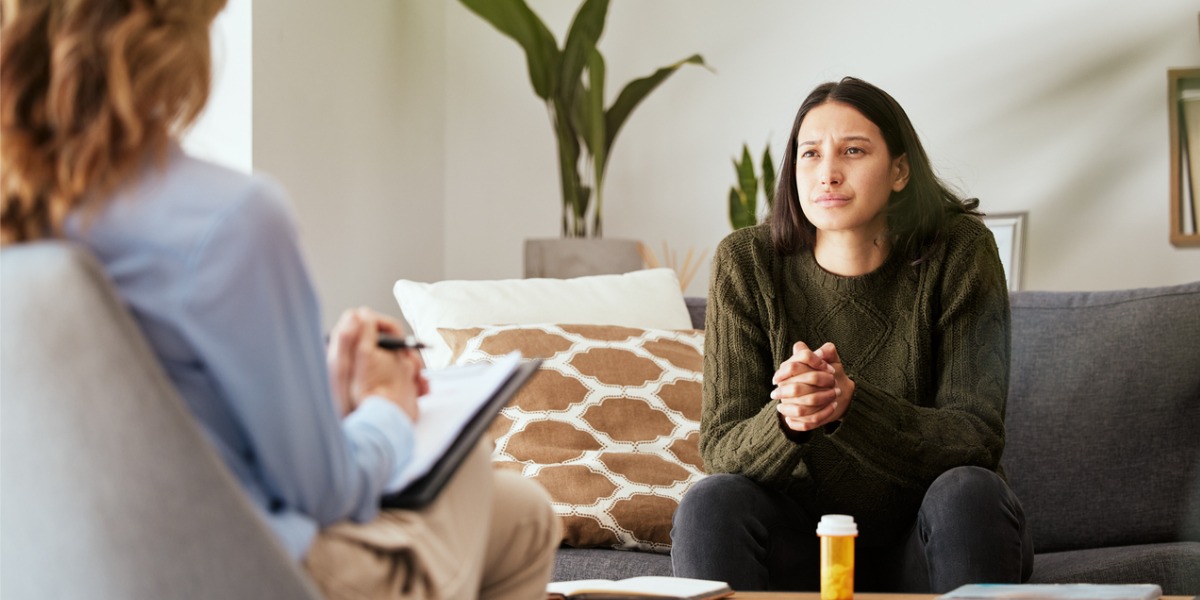With an increase in awareness and a decrease in stigma related to mental health treatment over the past decade, it’s important to determine whether these positive changes resulted in a corresponding positive change: an increase in outpatient mental health treatment among adults.
Outpatient mental health treatment is one type of treatment available to patients with a clinical mental health disorder. Patients with the following disorders can benefit from outpatient mental health treatment:
- Anxiety
- Depression
- Bipolar disorder
- Obsessive-compulsive disorder (OCD)
- Personality disorders
- Attention-deficit hyperactivity disorder (ADHD)
- Posttraumatic stress disorder (PTSD)
Whereas inpatient treatment or residential treatment involves living at the treatment facility, most patients in outpatient mental health treatment live at home. Types of outpatient treatment include:
- Standard outpatient treatment: office visits weekly or biweekly
- Intensive outpatient treatment (IOP): immersive treatment 3-5 days a week, 3-5 hours per day, patients live at home
- Partial hospitalization treatment (PHP): immersive treatment 5 days a week, 5-6 hours per day, patients live at home.
In addition, there are two new types of outpatient treatment we all know about:
- Telehealth, phone: outpatient treatment via telephone
- Telehealth, virtual: outpatient treatment via video chat
We know that in recent years, rates of mental illness and serious mental illness among adults in the U.S. have increased. For instance, in 2023, a total 22.8 percent of adults reported any mental illness, compared to 14.7 percent in 2018. In addition, in 2023, a total of 5.7 percent of adults reported a serious mental illness, compared to 4.6 percent in 2018.
In this article, we’ll examine whether rates of outpatient mental health treatment increased alongside rising rates of mental illness among adults.
Outpatient Mental Health Treatment: Young, Middle-Aged, and Older Adults
In the article, “Trends in Outpatient Psychotherapy Among Adults in the US,” a team researchers analyzed data collected from close to 90,000 patients to assess any changes in the use of psychotherapy for mental health treatment among adults in the U.S. between 2018 and 2021.
The study included data from close to 90,000 patients:
- 18-34 years: 22,510 (29.0%)
- 35-64 years: 43,371 (48.8%)
- ≥65 years: 23,738 (22.2%)
The research team collected additional demographic information including gender, education, insurance type, income, employment, and location. In the study, researchers placed patients who engaged in in-person, outpatient mental health treatment in the psychotherapy group. Researchers placed patients who engaged in outpatient mental health treatment via video chat in the telehealth group. Researchers did not collect data on telephone-only outpatient mental health treatment.
Let’s look at the data, starting with the information on psychotherapy, and compare rates among various demographic groups.
2018 to 2021: Outpatient Psychotherapy
Between 2018 and 2021, psychotherapy use increased more significantly among:
Females compared males:
- Females: 7.7% increased to 10.5%
- Males: 5.2% increased to 6.3%
Younger patients compared to older patients:
- 18-34: 8% increased to 11.9%
- ≥65: 3.6% increased to 4.6%
College graduates compared to non-high school graduates:
- College: 7.6% increased to 11.4%
- Non-HS: 5.5% increased to 7.0%
Patients with private insurance compared to patients with public insurance:
- Private: 6.1% increased to 8.9%
- Public: 8.8% to 8.8%, no change
Adults with income over the poverty level compared to adults with income below the poverty level:
- Above: 5.7% increased to 8.2%
- Below: 9.7% increased to 10.0%
Employed adults compared to unemployed adults:
- Employed (under 65): 5.7% increased to 8.9%
- Unemployed (under 65): 10.8% decreased to 10.5%
Adults in urban areas compared to adults from rural areas:
- Urban: 6.5% increased to 8.7%
- Rural: 6.4% decreased to 5.9%
Now let’s look at the data on outpatient treatment via video chat and compare rates among various demographic groups.
2018 to 2021: Telehealth Treatment
In 2021 teletherapy use was significantly higher among:
Younger patients compared to middle-aged patients and older patients:
- Patients 18-35 vs. 36-64: 3.7 percentage points higher
- Patients 18-35 vs. ≥65: 6.5 percentage points higher
Females compared to males:
- 1.9 percentage points higher
Unmarried patients compared to married patients:
- 2.9 percentage points higher
College educated adults compared to adults without a high school diploma:
- 4.9 percentage points higher
Higher income adults compared to lower income adults:
- 2.3 percentage points higher
Patients with private insurance compared to patients with public insurance:
- 2.5 percentage points higher
Patients living in urban areas compared to patients living in rural areas:
- 2.7 percentage points higher
We’ll discuss these results now.
Understanding Mental Health Treatment Among Adults: Inside the Data
The first thing we’ll note is that the increases in outpatient mental health treatment between 2018 and 2021 did not match the increases in rates of mental illness between 2018 and 2021. If we look at the figures for any mental illness we reported above, we see an increase of 8.1 percentage points increase between 2018 and 2021. However, when we examine increases in outpatient mental health treatment, all the increases are relatively small, between 3-5 percentage points.
That means that as rates of mental illness increased between 2018 and 2021, the treatment gap increased as well. The treatment gap is the difference between the number of people who need treatment and the number of people who receive it.
In the U.S., the treatment gap is far too high.
With that said, we’ll move on to the notable differences researchers identified among the demographic groups in the study:
Psychotherapy Use: Key Factors
- Gender and Age:
- Females and young adults reported the largest increases in psychotherapy use
- Finances and Education:
- Higher income and current employment associated with larger increase
- Private insurance associated with larger increase
- Higher educational attainment associated with larger increase
- Living in an urban area associated with larger increase
Now let’s look at the use of telehealth, and examine any demographic differences noted by the research team.
Telehealth Use: Key Factors
- Gender and Age:
- Females and young adults experienced the largest increases in telehealth use
- Finances and Education:
- Higher income and current employment also associated with larger increase
- Private insurance associated also with larger increase
- Higher educational attainment also associated with larger increase
- Living in an urban area also associated with larger increase
What we can see in the data first confirms a phenomenon we’re familiar with: females and people from younger generations are more likely to engage in mental health treatment than males and people from older generations.
Those differences have been embedded in our culture for decades.
In general, the message to women is that it’s okay to talk about your emotions, whereas the message to men has been the opposite: talking about feelings is a sign of weakness. While we work to change these archaic norms, the data indicate we still have work to do.
The next thing we see in the data is that people with greater economic advantage reported greater increases in outpatient mental health treatment in both modalities: in-person psychotherapy and telehealth. The most obvious examples appear between people with college degrees and people without a high school diploma, and between people who live in urban areas and people who live in rural areas.
People with college degrees and people in urban areas accessed telehealth options for outpatient mental health treatment at far greater rates that people without a high school diploma and people who live in rural areas.
We’ll discuss these insights below.
How Does This Information Help?
One thing jumps out of the data and grabs our attention: access to treatment, particularly around telehealth. Telehealth use rates among people without a high school diploma, older adults, and people from rural areas are far below those of people with a college degree, younger adults, and people from urban areas.
For us, this means that when we offer a telehealth option to a potential patient, we need to be mindful that what we think is increasing access may not actually increase access. We can brainstorm alternative paths and solutions to offer access to people who need it. We also note the disparity in treatment based on socioeconomic factors, which foreground larger issues in our society related to healthcare, overall. We’ll close this article with the words of the study authors, who address these issues of access and socioeconomics:
“This study found that psychotherapy use increased significantly faster among several socioeconomically advantaged groups and that inequalities were evident in teletherapy access. These trends and patterns highlight a need for clinical interventions and health care policies to broaden access to psychotherapy including teletherapy.”
We agree one hundred percent, and support any initiative that brings more help, more quickly, to more people.


